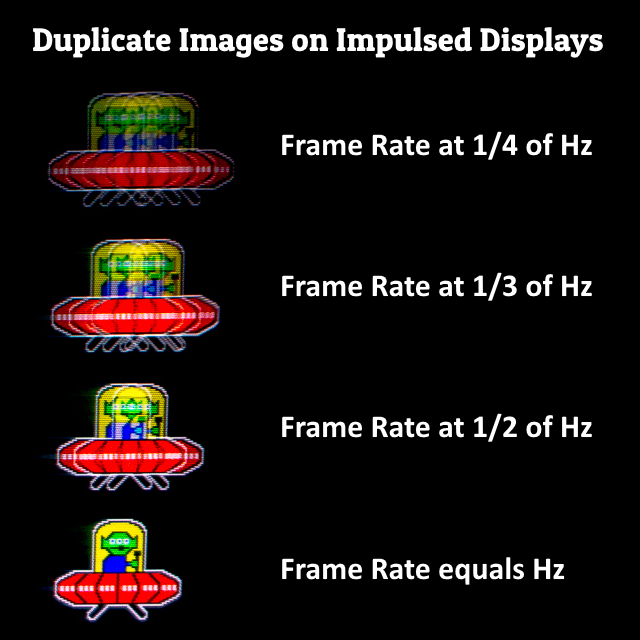thatoneguy wrote: ↑25 Dec 2024, 13:44
xenphor wrote: ↑25 Dec 2024, 12:25
Could this tech be used with VR headsets? I tried VR for the first time with a Quest 3 and my eyes couldn't tolerate the flickering. I think a lot more people could tolerate VR if the image didn't flicker.
Counter-intuitive
The rolling scan behavior would be much more noticeable on VR
I haven't heard too many people complain about flicker with VR
That said, the plan for VR is likely high hertz(+480hz at least) and asynchronous reprojection
This is an interesting subject. I've been an XR software developer for years and I've dove pretty far down the AR and VR display temporals rabbit hole and I can only hope that you're right. Whether there's even a plan at all for display temporals in VR is another question but let's talk technicals.
Humans are absolutely capable of noticing strobing rates above 90Hz. The flicker fusion threshold is a relatively fluid and multivariable equation and most people stop noticing flicker in most circumstances at around 90Hz but a significant proportion can still notice it up to 120Hz in some circumstances. https://en.wikipedia()org/wiki/Flicker_fusion_threshold
Fluorescent lighting with strobing at 100Hz or 120Hz is associated with often subconscious discomfort as found by a variety of studies. DOI: 10.1080/001401398186928
Especially in VR, higher brightness with HDR displays as well as increased FOVs, duty cycle characteristics, and even the wavelengths of light can make flicker significantly more noticeable than a phone display or computer monitor.
Most VR headsets unfortunately run at 90Hz; even recently released high end headsets like the Apple Vision Pro, Bigscreen Beyond, and MeganeX 8K. Those devices, as well as the Quest 2 & 3, often run below that rate for various types of content.
The quest often runs at 72Hz for natively rendered content and that's well within the flicker range.

- strobed-display-image-duplicates.png (155.68 KiB) Viewed 9007 times
Even with high refresh rates and reprojection, temporal issues remain. 480Hz with strobing and reprojection on 60FPS content for example would be a big improvement over PSVR running at 120Hz with 60FPS content but both systems would exhibit multiple projection artifacts like those shown above.
Ultimately the solution is going to have to be either or both a high framerate input and interpolation/extrapolation.
Without interpolation, if a 60FPS input is fed into a full persistence (un-strobed) 1000Hz VR display with the best depth reprojection and disocclusion filling, camera movement will be essentially artifact free but any non-camera object movement will be stuck with all the artifacts of 60FPS/Hz.
I don't see any application of CRT emulation in VR outside of recreating a virtual living room (where only the virtual CRT would have it) or for artistic/experimental purposes.
That said, there's definitely applications on flat displays even outside of those use cases.
